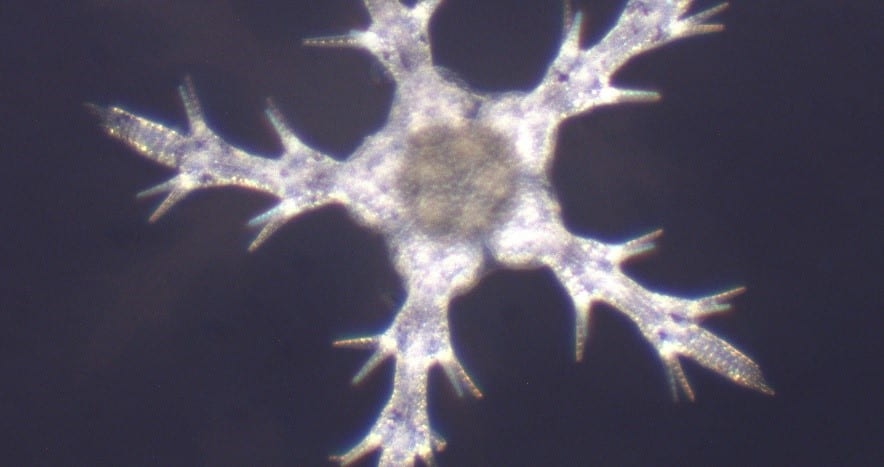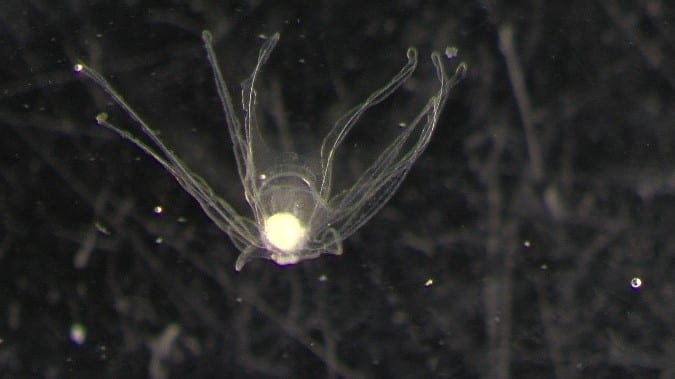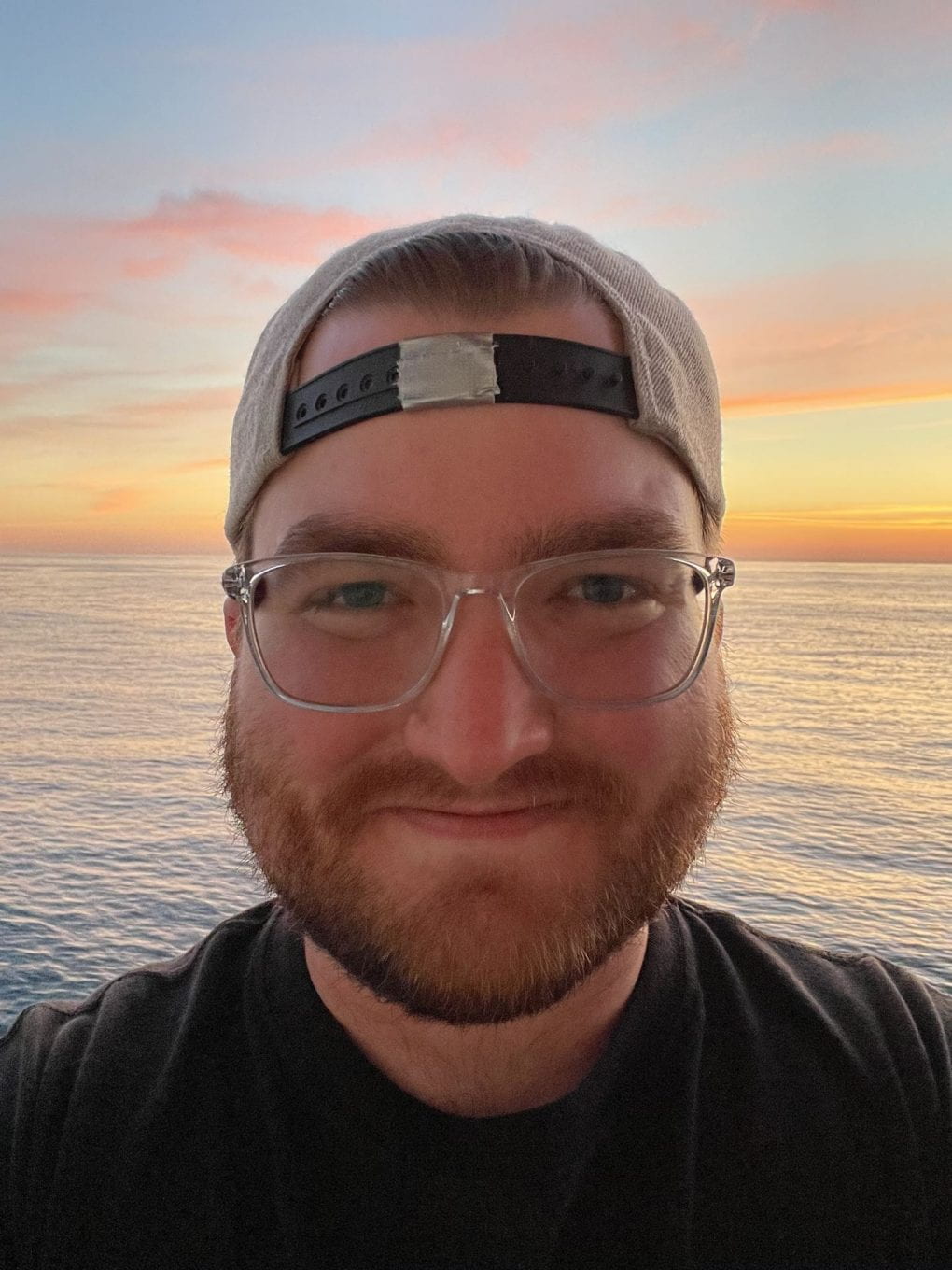June 7th, 2021
After two days of transit, rounding the Florida peninsula and coming out of the Atlantic, we arrived at the Florida Keys around 11:30 am. In studying larval dispersal between our Gulf of Mexico and western Atlantic sites, the presence of our target species in these water columns would solidify the possibility of larval transport between sites. This channel is the shallowest area the larvae would need to cross, being the ultimate hurdle in their journey between cold seeps.
The waves seemed to be just as excited as we were to be in the Keys. When we arrived, the weather was not cooperating, and the waves were high. We hesitated to deploy Sentry to conduct a SyPRID plankton tow and we attempted to wait out the weather to no avail. Instead we decided to pursue alternate methods and use a more typical plankton tow. Deployed at 200m deep, we retrieved it around 3pm and the scientists were ready to explore this exciting sample. How full of exciting larvae this sample was! We found many larvae types unseen the rest of the cruise including, plutei (sea urchins and brittle stars), asteroid and ophiuroid juveniles (small sea stars and brittle stars), brachiolaria (sea stars) and auricularia (sea cucumbers), cydippids (comb jellies), and a pilidium (nemerteans).
Meet a Scientist on Board
Hi Everyone,
My name is Mitchell Hebner. I am originally from Albuquerque, NM, and a first year Graduate student at Western Washington University. I am working with Shawn Arellano on a project involving vertical migration modeling of deep-sea snail larvae. I did my undergrad at the University of Oregon, and that is how I got involved in the SALT project.
During the last few terms of my undergrad, I volunteered in Craig Young’s lab at the Oregon Institute of Marine Biology, the University of Oregon’s satellite campus on the Oregon coast. It was here that I finally got some hands-on experience working with organisms in my preferred field of study – marine biology. Craig was gracious enough to allow some undergrads the chance to embark on a research cruise around the end of February to the middle of March 2020. I had just finished all my undergraduate classes in December 2019, and this opportunity to attend a research cruise was too great to decline, so I jumped at the chance to do deep-sea research out in the field. The cruise was aboard the R/V Atlantis and it was the experience of a lifetime.
The Atlantis was my personal maiden voyage into the realm of deep-sea biology, and the time I spent on board was wonderous. There was always work and things to do, but it really did not feel like work because it was so much fun. It was on this cruise too, that I met Shawn Arellano for the first time. She would end up becoming my advisor. The time spent on the Atlantis was laying the groundwork for my current experience aboard the R/V Thomas G. Thompson.
All of us, some old and new friends, have come full circle – one COVID pandemic later – we are back at sea on the R/V Thomas G. Thompson, picking up the sample collectors and things we left on the bottom of the ocean a little more than a year ago. The tube collectors and other things we set down at various cold seep sites in the Gulf of Mexico and Western Atlantic Ocean with the HOV Alvin submarine, are returning to the surface and the lab here on the Thompson with the help of ROV Jason. As part of the science party, I am processing and collecting samples for various projects including my own here on this cruise, and it feels good to be back out in the field doing science.
Conducting research at sea for a month inevitably overlaps with large milestones. It’s common that on research cruises there’s a birthday on board! We’ve had two birthdays on board so far, Matt the Jason pilot, and today one of our own, Carmen! Today she turned 22, with the science and ship crew helping to celebrate. Sorting larvae all day may not have been the ideal birthday party, but the cake our wonderful cooks made, and some decorations made it unforgettable.
“This was the most memorable birthday I’ve ever had. Everyone helped make it so special and I loved every moment. My favorite part was stargazing and watching bioluminescence with all the incredible friends I’ve made while at sea.”







Such a grateful post, there are tremendous and the best essay writing services available to meet tight deadlines and tailor incredible writing solutions for a successful academic journey.